Human Orbital Spaceflights
![]()
International Flight No. 132STS-41Discovery (11)36th Space Shuttle missionUSA |
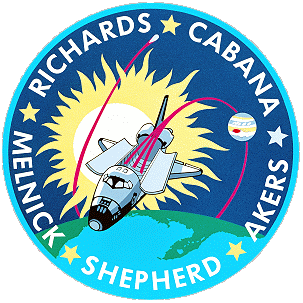 |
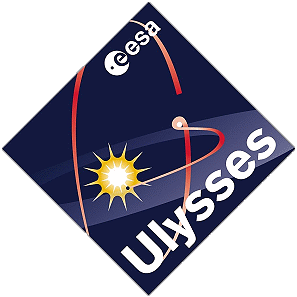 |
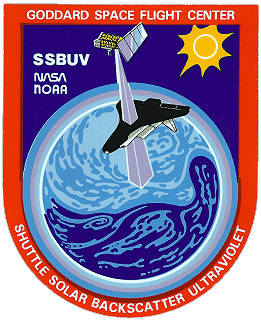 |
||
![]()
Launch, orbit and landing data
walkout photo |
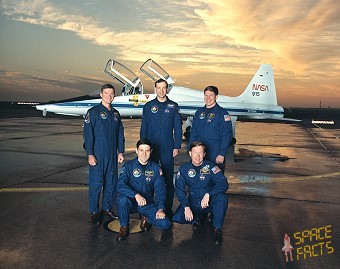 |
||||||||||||||||||||||||||||
alternative crew photo |
|||||||||||||||||||||||||||||
alternative crew photo |
|||||||||||||||||||||||||||||
alternative crew photo |
Crew
| No. | Surname | Given names | Position | Flight No. | Duration | Orbits | |
| 1 | Richards | Richard Noel "Dick" | CDR | 2 | 4d 02h 10m 03s | 66 | |
| 2 | Cabana | Robert Donald | PLT | 1 | 4d 02h 10m 03s | 66 | |
| 3 | Melnick | Bruce Edward "Mel" | MS-1, EV-1 | 1 | 4d 02h 10m 03s | 66 | |
| 4 | Shepherd | William McMichael | MS-2, FE, RMS | 2 | 4d 02h 10m 03s | 66 | |
| 5 | Akers | Thomas Dale | MS-3, EV-2 | 1 | 4d 02h 10m 03s | 66 |
Crew seating arrangement
|
 |
|
||||||||||||||||||||||||
Hardware
| Orbiter : | OV-103 (11.) |
| SSME (1 / 2 / 3): | 2011 (6.) / 2031 (4.) / 2107 (3.) |
| SRB: | BI-040 / RSRM 13 |
| ET: | ET-39 (LWT-32) |
| OMS Pod: | Left Pod 04 (8.) / Right Pod 01 (13.) |
| FWD RCS Pod: | FRC 3 (11.) |
| RMS: | 301 (8.) |
| EMU: | EMU No. 2013 (PLSS No. 1005) / EMU No. 2008 (PLSS No. 1011) |
Flight
|
Launch from Cape Canaveral (KSC) and
landing on the Edwards
AFB, Runway
22. Deploying of the ESA built Ulysses spacecraft to explore polar regions of the sun was the main goal of the mission. It was the heaviest payload to date. Discovery weighed 259,593 lb (117,749 kg). Other payloads and experiments included the Shuttle Solar Backscatter Ultraviolet (SSBUV) experiment, INTELSAT Solar Array Coupon (ISAC), Chromosome and Plant Cell Division Experiment (CHROMEX), Voice Command System (VCS), Solid Surface Combustion Experiment (SSCE), Investigations into Polymer Membrane Processing (IPMP), Physiological Systems Experiment (PSE), Radiation Monitoring Experiment III (RME-III), Shuttle Student Involvement Program (SSIP) and Air Force Maui Optical Site (AMOS). Ulysses was a joint mission conducted by the European Space Agency (ESA) and NASA to study the polar regions of the sun and the interplanetary space above the poles. The spacecraft was the first to achieve a flight path nearly perpendicular to the ecliptic, the plane in which Earth and the other planets orbit the sun. Throughout its 5-year mission, Ulysses studied three general areas of solar physics: the sun itself, magnetic fields and streams of particles generated by the sun and interplanetary space above the sun. The Ulysses spacecraft, a ground control computer system and a spacecraft operations team were provided by ESA, while Space Shuttle launch, tracking and data collection during the mission were performed by NASA and the Jet Propulsion Laboratory (JPL). Scientific instruments aboard the craft were provided by scientific teams in both Europe and the United States. Ulysses' systems and scientific instruments were contained within a main spacecraft bus measuring 10.5 by 10.8 by 6.9 feet (3.2 by 3.29 by 2.1 meters). Communication with Earth is maintained via a 5.4-foot-diameter (1.65 meter), parabolic high-gain antenna. After release from Discovery's cargo bay, the 807-pound (366 kg) spacecraft deployed an 18.2-foot (5.55 meters) radial boom carrying several experiment sensors, as well as a 238-foot (72,54 meters) dipole wire boom and a 26.2-foot (7.99 meters) axial boom, which served as antennas for a radio wave-plasma wave experiment. The Ulysses spacecraft's main computer was its onboard data handling system, responsible for processing commands received from the ground as well as managing and passing on all data from each of Ulysses' science instruments. This system included: a decoder unit, which processed incoming signals from the spacecraft radio and passed on commands to other systems; a central terminal unit, which distributed commands, monitored and collected data on spacecraft systems, and stored and passed on data from Ulysses' science instruments; remote units, which handled input-output to and from spacecraft systems; and the data storage unit, two tape recorders. Each of the tape recorders could store 45.8 million bits of data - representing 16 to 64 hours of data-taking, depending on how often data are sampled. Another system, attitude and orbit control, was responsible for determining the Ulysses craft's attitude in space, as well as firing thrusters to control the attitude and spin rate. This system included a redundant computer, sun sensors and the reaction control system, including eight thrusters and the hydrazine fuel system. Ulysses' load of 73 pounds (33 kg) of monopropellant hydrazine fuel was stored in a single diaphragm tank mounted on the spacecraft's spin axis. The spacecraft's telecommunications system included two S-band receivers, two 5-watt S-band transmitters, two 20-watt X-band transmitters, the high-gain antenna and two smaller low-gain antennas. The high-gain antenna was used to transmit in either S band or X band as well as to receive in S band. The low-gain antennas were used both to transmit and received in the S band. The spacecraft received commands from Earth on a frequency of 2111.607 MHz in the S band. The craft could transmit to Earth on 2293.148 MHz in the S band or on 8408.209 MHz in the X band. Ulysses' power source was a radioisotope thermo-electric generator (RTG), similar to RTGs flown on previous solar system exploration missions. RTGs are required for these deep-space missions because solar arrays large enough to generate sufficient power so far from the sun would be too large and too heavy to be launched by available means. In the RTG, heat produced by the natural decay of plutonium-238 is converted into electricity by thermocouples. After astronauts released Ulysses from Discovery's payload bay at an altitude of 160 nautical miles (296 km) under the oversight of Mission Specialist Thomas Akers, a two-stage engine, the Inertial Upper Stage (IUS), attached to Ulysses ignited, sending the craft on its initial trajectory. After the IUS separates, a smaller booster engine, the Payload Assist Module (PAM-S), fired. Before the PAM-S fired, it spinned Ulysses up to a rate of 70 revolutions per minute (rpm). After the engine burn concluded, the spin rate slowed to about 7 rpm. Boom deployment further slowed the spin rate to about 5 rpm. Ulysses continued to spin at this rate throughout the remainder of the mission. The booster engines sent Ulysses first to Jupiter, which the craft encountered in February 1992. As Ulysses flew past Jupiter at about 30 degrees north Jovian latitude, the gravity of the giant planet altered the craft's trajectory so Ulysses drove downward and away from the ecliptic plane. In its orbit around the sun, Ulysses flight path took it from a maximum distance from the sun of 5.4 astronomical units (AU), or about 500 million miles, to a closest approach of 1.3 AU, or about 120 million miles (193 million km). The spacecraft reached 70 degrees south solar latitude in June 1994, beginning its transit of the sun's south polar regions. The craft spend about 4 months south of that latitude at a distance of about 200 million miles from the sun. In February 1995, Ulysses crossed the sun's equator, followed by its 4-month pass of the sun's northern polar region beginning in June 1995. With the Ulysses spacecraft on its way, the STS-41 crew began an ambitious schedule of science experiments. The Chromosome and Plant Cell Division (CHROMEX-2) experiment was designed to study some of the most important phenomena associated with plant growth. The CHROMEX-2 experiment aimed to determine how the genetic material in the root cells responsible for root growth in flowering plants responds to microgravity. All plants, in the presence of light, have the unique ability to convert carbon dioxide and water into food and oxygen. Any long expedition or isolated settlement beyond Earth orbit will almost certainly necessitate the use of plants to manufacture food for crew members. In addition, information from space-based life sciences research promotes fundamental understanding of the mechanisms responsible for plant growth and development. An improved understanding of plant responses to spaceflight is required for the long-term goal of a controlled ecological life support system for space use. One of the practical benefits of studying and designing plant growth systems (and eventually agricultural systems) for use in space is the contribution this work may make to developing new intensive farming practices for extreme environments on Earth. Over the last few decades, basic research in the plant sciences has enabled the great increase in crop productivity (the "green revolution") that has transformed modern agriculture. Plant research in space may help provide the necessary fundamental knowledge for the next generation of agricultural biotechnology. The first flight of CHROMEX in March 1989 (STS-29) showed that spaceflight seems to have a distinct, measurable and negative effect on the structural integrity of chromosomes in root tip cells. The plantlets grew well, but at the cellular level, in the chromosomes in rapidly dividing root tip cells, damage was clearly visible through light microscopy. Damage or aberrations were seen in 3-30% of dividing cell chromosomes. Ground controls were damage-free. The exact cause for the chromosomal aberrations seen on CHROMEX-1 is not known, but data from the radiation measuring devices flown with the plantlets suggest that radiation alone was insufficient to cause the observed damage. The principal investigator has suggested that an interaction of microgravity and radiation may be responsible. This hypothesis cannot be fully tested until an artificial gravity centrifuge is developed to enable additional space biology experiments. Roots grown in space also were seen to have a higher percentage of cells undergoing division than ground controls. As expected, roots grew in all directions in space, while roots grew normally and downward on the ground controls. More root tissue grew on the space flown plants, but this was probably due to the increased moisture held in the foam used as artificial soil in the Plant Growth Unit. The plants were grown as planned without microbial contamination throughout the flight and ground control experiments. The Solid Surface Combustion Experiment (SSCE) studied the basic behavior of fire by examining the spreading of flame over solid fuels without the influence of gravity. This research may lead to improvements in fire prevention or control both on Earth and in spacecraft. On Earth, spreading flames are strongly affected by gravity. Hot gases, which are less dense than cold gases, ascend from flames in the same way that oil floats on water. This phenomena - "buoyant convection" - removes hot gases from the flame and draws in fresh air to take their place. The resulting air motion tends to cool the flame. However, it also provides fresh oxygen, which makes the flame hotter. The heating and cooling effects compete, with the outcome depending upon the speed of the airflow (A campfire, for example, is strengthened by blowing, while a match can be blown out). Scientists quantify the airflow effects on Earth by augmenting buoyant convection with controlled amounts of forced convection. On Earth, gravity prevents observation of airflows slower than buoyant convection speeds, limiting the ability to develop complete models of solid surface combustion. SSCE provided observations of flames spreading without buoyant convection. Air motion was eliminated except to the extent that the flame spreads into fresh air and away from the hot gases. Convective cooling and the heating effect of fresh oxygen are simultaneously minimized. The competition between heating and cooling effects was quantified by performing tests in artificial atmospheres that have different fractional amounts of oxygen (the air we breathe is 21% oxygen). The SSCE hardware consisted of a chamber to house the burning sample, two cameras to record the experiment on film and a computer to control experiment operations. Fuel and air temperatures are recorded during the experiment for comparison with theory. The SSCE test plan called for eight Shuttle flights over the next 3 years. Five flights will use samples made of a special ashless filter paper and three will use samples of polymethylmethacrylate (PMMA), commonly known as Plexiglas. Each test will be conducted in an artificial atmosphere containing oxygen at levels ranging from 35% to 50%. The Shuttle Solar Backscatter Ultraviolet (SSBUV) instrument was developed by NASA to compare the observations of several ozone measuring instruments aboard the National Oceanic and Atmospheric Administration's TIROS satellites (NOAA-9 and NOAA-11) and NASA's NIMBUS-7 satellite. The SSBUV data is used to calibrate these instruments to insure the most accurate readings possible for the detection of ozone trends. The SSBUV helped scientists solve the problem of data reliability caused by the calibration drift of the Solar Backscatter Ultraviolet (SBUV) instruments on these satellites. The SSBUV used the Space Shuttle's orbital flight path to assess instrument performance by directly comparing data from identical instruments aboard the TIROS spacecraft and NIMBUS-7 as the Shuttle and satellite pass over the same Earth location within an hour. These orbital coincidences could occur 17 times a day. The satellite-based SBUV instruments estimate the amount and height distribution of ozone in the upper atmosphere by measuring the incident solar ultraviolet radiation and ultraviolet radiation backscattered from the Earth's atmosphere. The SBUV measures these parameters in 12 discrete wavelength channels in the ultraviolet. Because ozone absorbs in the ultraviolet, an ozone measurement can be derived from the ratio of backscattered radiation at different wavelengths, providing an index of the vertical distribution of ozone in the atmosphere. The SSBUV has been flown once, on STS-34 in October 1989. Its mission successfully completed, the SSBUV was refurbished, recalibrated and reprocessed for flight. NASA planned to fly the SSBUV approximately once a year for the duration of the ozone monitoring program, which is expected to last until the year 2000. As the project continues, the older satellites with which SSBUV works are expected to be replaced to insure continuity of calibration and results. The Intelsat Solar Array Coupon (ISAC) experiment on STS-41 was being flown by NASA for the International Telecommunications Satellite Organization (INTELSAT). The experiment measured the effects of atomic oxygen in low Earth orbit on the Intelsat satellite's solar arrays, to judge if the stranded satellite's arrays will be seriously damaged by those effects. Intelsat, launched aboard a commercial expendable launch vehicle earlier this year, was stranded in a low orbit and is, at the request of the company, being evaluated for a Space Shuttle rescue mission in 1992 (STS-49). ISAC consisted of two solar array material samples mounted on Discovery's remote manipulator system (RMS) arm. The arm was extended to hold the samples perpendicular to the Shuttle payload bay, facing the direction of travel, for at least 23 consecutive hours. The Physiological Systems Experiment (PSE) was a middeck payload sponsored by the Pennsylvania State University's Center for Cell Research, a NASA Office of Commercial Programs Center for the Commercial Development of Space. The corporate affiliate leading the PSE investigation was Genentech, Inc., South San Francisco, Calif., with NASA's Ames Research Center, Mountain View, Calif., providing payload and mission integration support. The goal of the PSE was to investigate whether biological changes caused by near weightlessness mimic Earth-based medical conditions closely enough to facilitate pharmacological evaluation of potential new therapies. Research previously conducted by investigators at NASA, Penn State and other institutions has revealed that in the process of adapting to near weightlessness, or microgravity, animals and humans experience a variety of physiological changes including loss of bone and lean body tissue, some decreased immune cell function, change in hormone secretion and cardiac deconditioning, among others. These changes occur in space-bound animals and people soon after leaving Earth's gravitational field. Therefore, exposure to conditions of microgravity during the course of space flight might serve as a useful and expedient means of testing potential therapies for bone and muscle wasting, organ tissue regeneration and immune system disorders. In this experiment, eight healthy rats received one of the natural proteins Genentech has developed. An identical group accompanied them during the flight, but did not receive the protein, thereby providing a standard of comparison for the treated group. Both groups were housed in self-contained animal enclosure modules which provided sophisticated environmental controls and plenty of food and water throughout the flights duration. The experiment's design and intent has received the review and approval of the Animal Care and Use Committees from both NASA and Genentech. Laboratory animal veterinarians will oversee selection, care and handling of the animals. The Investigations into Polymer Membrane Processing (IPMP), a middeck payload, made its second Space Shuttle flight for the Office of Commercial Programs-sponsored Battelle Advanced Materials Center for the Commercial Development of Space (CCDS) in Columbus, Ohio. The objective of the IPMP research program was to gain a fundamental understanding of the role of convection driven currents in the transport processes which occur during the evaporation casting of polymer membranes and, in particular, to investigate how these transport processes influence membrane morphology. Polymer membranes have been used in the separations industry for many years for such applications as desalination of water, atmospheric purification, purification of medicines and dialysis of kidneys and blood. The IPMP payload used the evaporation casting method to produce polymer membranes. In this process, a polymer membrane was prepared by forming a mixed solution of polymer and solvent into a thin layer; the solution is then evaporated to dryness. The polymer membrane was left with a certain degree of porosity and then could be used for the applications listed above. The STS-41 experiment investigated the effects of evaporation time on the resulting membranes by deactivating the two units at different times. The evaporation process was terminated in the first unit after a period of 5 minutes, by turning the valve to its final position. This causes the process to terminate by flushing the sample with water vapor, and thus setting the membrane structure. After the process was terminated, the resulting membrane then was not be affected by gravitational forces experienced during reentry, landing and post-flight operations. The second unit was deactivated after a period of 7 hours. In IPMP's initial flight on STS-31, mixed solvent systems were evaporated in the absence of convection to control the porosity of the polymer membrane. Ground-based control experiments also were performed. Results from STS-31 strongly correlated with previous KC-135 aircraft testing and with a similar experiment flown on the Consort 3 sounding rocket flight in May 1990. The morphology of polymer membranes processed in reduced gravity showed noticeable differences from that of membranes processed on Earth. The Voice Command System (VCS) was a flight experiment using technology developed at the Johnson Space Center, Houston, to control the onboard Space Shuttle television cameras using verbal commands. On STS-41, the VCS was used by mission specialists William Shepherd and Bruce Melnick. The system allowed the astronauts to control the cameras hands-free using simple verbal commands, such as "stop, up, down, zoom in, zoom out, left, right". The VCS unit was installed in Discovery's aft flight deck, in an instrument panel directly below the standard closed-circuit television displays and controls. The VCS displayed and controlled are a 2- by 10-inch (5.1 by 25.4 centimeters) fluorescent display and three switches, a power switch, mode switch and reset switch. Voice commands from William Shepherd and Bruce Melnick have been recorded prior to the flight and voice templates inside the VCS were made to allow the computer to recognize them. When using the VCS, the mission specialist was wearing a special headset with a microphone that feeds the verbal commands into the system. The Radiation Monitoring Equipment-III measured ionizing radiation exposure to the crew within the orbiter cabin. RME-III measured gamma ray, electron, neutron and proton radiation and calculates - in real time - exposure in RADS-tissue equivalent. The information was stored in memory modules for post-flight analysis. The hand-held instrument was stored in a middeck locker during flight except for activation and memory module replacement periods. RME-III was activated as soon as possible after achieving orbit and operated throughout the mission. A crew member entered the correct mission elapsed time upon activation and change memory modules every two days. RME-III was the current configuration, replacing the earlier RME-I and RME-II units. RME-III last flew on STS-31. The experiment had four zinc-air batteries and five AA batteries in each replaceable memory module. The Air Force Maui Optical Site (AMOS) tests allowed ground- based electro-optical sensors located on Mt. Haleakala, Maui, Hawaii, to collect imagery and signature data of the orbiter during cooperative overflights. The scientific observations made of the orbiter, while performing reaction control system thruster firings, water dumps or payload bay light activation, and were used to support the calibration of the AMOS sensors and the validation of spacecraft contamination models. The AMOS tests had no payload unique flight hardware and only required that the orbiter be in predefined attitude operations and lighting conditions. |
Photos / Graphics
 |
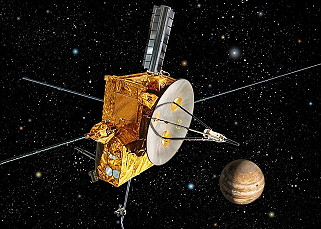 |
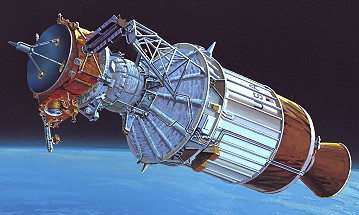 |
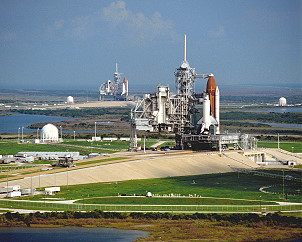 |
 |
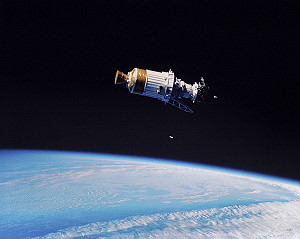 |
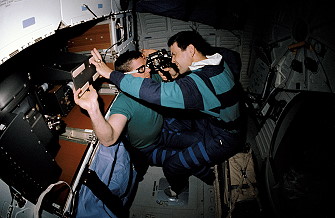 |
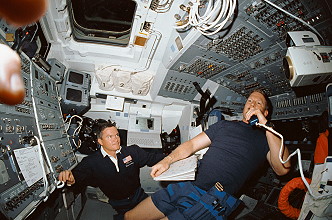 |
 |
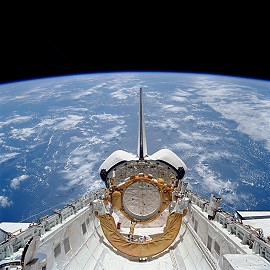 |
 |
 |
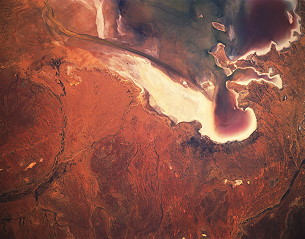 |
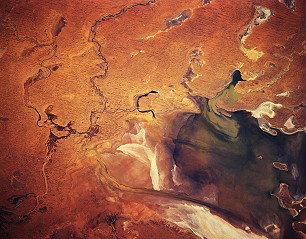 |
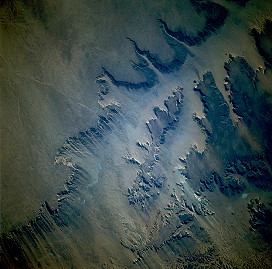 |
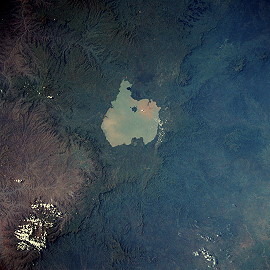 |
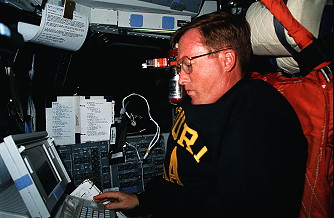 |
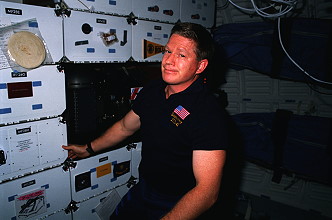 |
 |
| © |  |
Last update on March 08, 2025.  |
 |